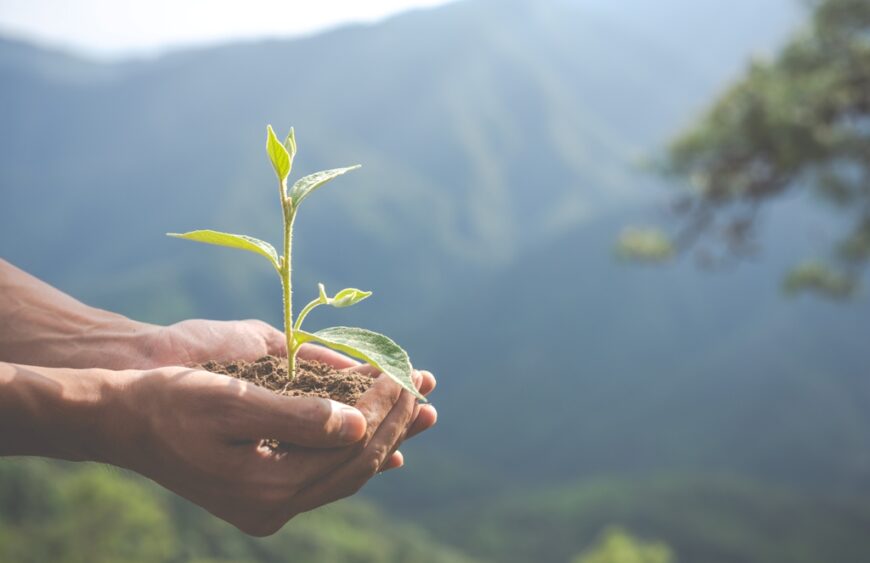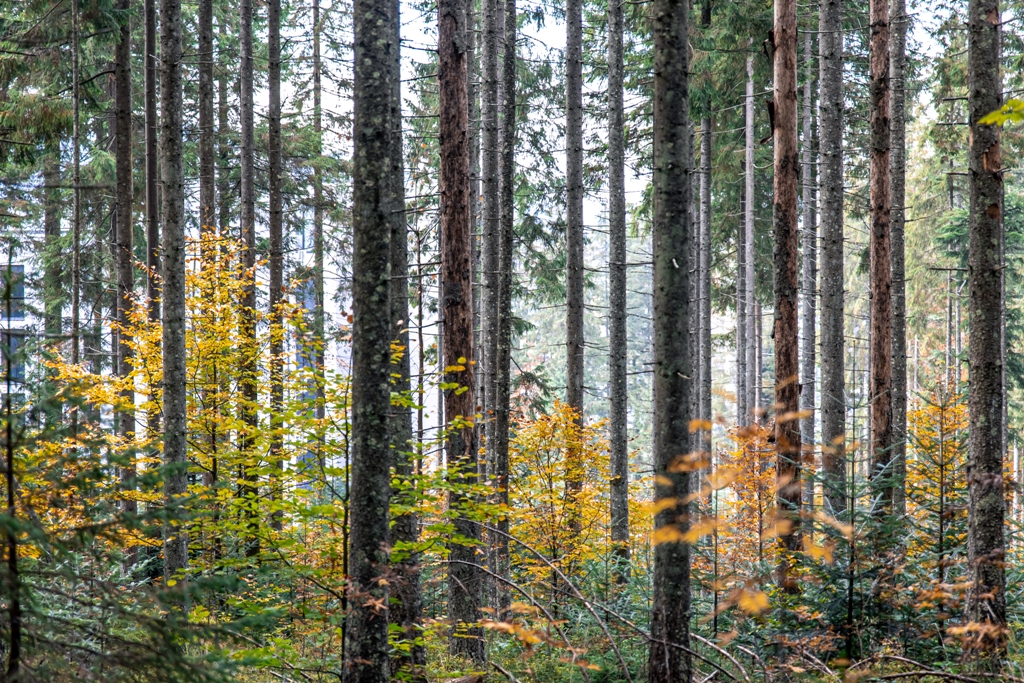The Ultimate Guide to Planting Trees: Step-by-Step Instructions
22 October 2023 2023-10-22 17:18The Ultimate Guide to Planting Trees: Step-by-Step Instructions

The Ultimate Guide to Planting Trees: Step-by-Step Instructions
Our planet is facing unprecedented environmental challenges, and one of the most effective ways individuals and communities can make a positive impact is by planting trees. Trees, often referred to as the lungs of our Earth, play a vital role in mitigating climate change, improving air and water quality, and supporting biodiversity. In this comprehensive guide, “The Ultimate Guide to Planting Trees: Step-by-Step Instructions,” we will take you on a journey through the world of tree planting, offering expert insights, statistics, and a step-by-step approach to ensure your tree planting efforts are successful and impactful.
Why Planting Trees Matters
Before we dive into the nitty-gritty of tree planting, let’s first explore why this endeavor is so crucial. Trees are nature’s remarkable carbon sequestration machines. A single mature tree can absorb up to 22 kilograms of carbon dioxide (CO2) annually, helping to reduce greenhouse gas levels in our atmosphere. When we consider that deforestation is responsible for approximately 15 billion trees being cut down annually worldwide, the urgency of tree planting becomes evident.
The benefits of trees extend beyond carbon sequestration. They act as natural air filters, purifying the air by absorbing pollutants and releasing oxygen. Furthermore, trees play a vital role in combating the urban heat island effect, where cities experience higher temperatures due to concrete and asphalt. Planting trees strategically within urban areas can reduce temperatures by as much as 7°C, making cities more livable and energy-efficient.
Selecting the Right Tree Species: Native Trees vs. Exotic Trees
Selecting the right tree species is a crucial step in your tree planting journey. The choice you make can determine whether your tree thrives or struggles in its new environment. Let’s explore the factors to consider when choosing the perfect tree species for your planting project.
One of the first decisions you’ll face is whether to plant native or exotic tree species. Native trees are those that naturally occur in your region. They have adapted to the local climate, soil conditions, and ecosystem over time. This often makes them hardier and more resilient to local challenges, such as pests and diseases. Planting native trees can support local wildlife by providing food and habitat, contributing to the overall biodiversity of your area.
On the other hand, exotic or non-native trees come from different geographic regions. While they may offer unique aesthetics and features, they may not be as well-suited to your local environment. However, some exotic trees can thrive in specific regions and conditions. It’s essential to research and choose exotic species carefully, considering factors like climate compatibility and potential invasiveness.
Diversity in tree species is not only aesthetically pleasing but also ecologically significant. A mix of tree species can enhance biodiversity by providing a variety of habitats and food sources for different wildlife species. When planning your tree planting project, consider incorporating a mix of native trees that are well-suited to your area. This approach can create a more resilient and balanced ecosystem.
Additionally, the diversity of tree species can help mitigate the impact of diseases and pests. Monoculture planting, where a single tree species dominates an area, is more susceptible to devastating outbreaks of pests or diseases that target that specific species. By diversifying your tree planting, you reduce the risk of widespread damage.

Preparing for Planting
Before you start digging a hole for your tree, it’s crucial to make proper preparations. Here, we’ll guide you through the essential steps to ensure your tree gets the best start in its new home.
To get started, gather the necessary tools and materials. You’ll need:
- A shovel or spade for digging the planting hole.
- A measuring tape or stick to ensure proper depth and spacing.
- Mulch to help retain moisture and regulate soil temperature.
- Compost or organic matter to improve soil fertility.
- Stakes and ties to support the young tree.
Selecting the right location for your tree is fundamental to its success. Here are some key considerations:
- Sunlight: Most trees require full sunlight for at least part of the day. Ensure the chosen location receives adequate sunlight for your specific tree species.
- Soil Type: Different tree species have varying soil preferences. Some prefer well-draining soils, while others thrive in moist or clayey soils. Understand your tree’s soil requirements and choose an appropriate location.
- Spacing: Consider the mature size of the tree when determining spacing. Trees should be planted far enough apart to prevent overcrowding as they grow.
- Drainage: Avoid areas with poor drainage, as waterlogged roots can lead to tree stress and disease.
Proper soil preparation is vital for healthy root development. Follow these steps:
- Clear the Area: Remove any grass, weeds, or debris from the planting site.
- Dig the Hole: Dig a hole that is roughly twice the width of the tree’s root ball but no deeper. The depth should be such that the top of the root ball is level with the ground surface. The width of the hole allows room for the roots to spread.
- Improve Soil Quality: Mix compost or organic matter with the soil you’ve removed from the hole. This improves soil fertility and provides nutrients for your tree.
- Backfill the Hole: Place the tree in the hole and backfill with the amended soil, gently tamping it down as you go to eliminate air pockets.
In the following sections, we will provide you with detailed instructions on the step-by-step tree planting process, including how to place the tree in the hole, how to care for your newly planted tree, and much more. By the end of this guide, you’ll have the expertise to plant trees that thrive and contribute to a greener, healthier world.
The Step-by-Step Tree Planting Process
Now that we’ve covered the essential preparations, it’s time to dive into the step-by-step tree planting process. Whether you’re a seasoned gardener or a novice, these instructions will guide you through the planting process with confidence.
- Choosing the Right Time
Before you start digging, consider the timing of your tree planting. While tree planting can be done in various seasons, planting in the fall or early spring is often ideal. These periods allow your tree to establish its roots before facing the challenges of hot summer temperatures or winter frost.
- Preparing the Tree
Ensure your tree is well-prepared for planting. Here’s what you should do:
- Inspect the Roots: Examine the tree’s root system. Trim any broken or damaged roots with clean, sharp pruning shears.
- Watering: If your tree’s roots are dry, soak them in water for a few hours before planting.
- Placing the Tree in the Hole
Follow these steps to correctly position your tree in the planting hole:
- Centering: Place the tree in the hole, ensuring it’s centered and upright.
- Depth: Position the tree so that the top of the root ball is level with the ground surface. Avoid planting too deeply, as this can suffocate the roots.
- Backfill: Gradually backfill the hole with the amended soil, tamping it down gently as you go. Ensure there are no air pockets around the roots.
- Watering: After backfilling halfway, water the tree thoroughly to settle the soil around the roots. Complete the backfilling, and water again.
- Mulching and Staking
To provide additional support and improve tree health, consider these steps:
- Mulching: Apply a layer of mulch around the base of the tree, leaving a few inches of space around the trunk. Mulch helps retain moisture, regulate soil temperature, and suppress weeds.
- Staking: If your tree is tall or in a windy location, secure it with stakes and ties. Be sure not to tie the tree too tightly, allowing some flexibility for natural movement.
- Post-Planting Care
Your job isn’t done after planting. Here’s how to care for your newly planted tree:
- Watering: Adequate watering is crucial. Keep the soil consistently moist, especially during the tree’s first year. Deep, infrequent watering is generally better than frequent shallow watering.
- Pruning: Prune any dead or damaged branches to encourage healthy growth.
- Protection: Protect your tree from potential threats, including pests and diseases. Consult local experts or arborists if you notice any issues.
By following these steps, you’ll give your newly planted tree the best chance to establish itself and thrive in its new environment. Remember that the care you provide during the early years of your tree’s life will have a lasting impact on its health and longevity.
Environmental Impact and Tree Planting Projects
Planting a single tree can have a significant positive impact on the environment, but the collective effort of tree planting projects worldwide is even more remarkable. In this section, we’ll explore the broader environmental impact of tree planting and how it contributes to a greener future.
One of the most critical roles trees play is carbon sequestration. A single mature tree can absorb up to 22 kilograms of carbon dioxide (CO2) annually. This natural process helps reduce greenhouse gas levels in our atmosphere, mitigating the effects of climate change. Considering that deforestation is responsible for approximately 15 billion trees being cut down annually worldwide, tree planting is an essential countermeasure.
To put this into perspective, a hectare of mature forest can sequester around 20 metric tons of carbon dioxide per year. Tree planting initiatives are actively working to offset carbon emissions from various sources, making a significant contribution to global climate change mitigation efforts.
While tree planting in natural landscapes is crucial, urban tree planting offers unique benefits. Cities worldwide are embracing the idea of increasing their tree canopy coverage to improve the quality of life for residents and combat urban challenges.
Urban areas often experience the urban heat island effect, where temperatures can rise by as much as 7°C due to concrete and asphalt. Planting trees strategically within cities can reduce this effect by providing shade, cooling the air, and reducing energy consumption for cooling buildings.
Furthermore, urban trees improve air quality by absorbing pollutants and releasing oxygen. They also provide habitat and sustenance for wildlife within city limits, supporting biodiversity even in densely populated areas.
Biodiversity is essential for a healthy ecosystem. Trees contribute significantly to biodiversity by providing a variety of habitats and food sources for wildlife. A single tree can offer shelter and sustenance to up to 300 different species of animals, including birds, insects, and mammals.
When planning tree planting projects, many organizations prioritize the selection of native tree species that support local wildlife. This approach creates a more balanced and resilient ecosystem, enhancing the overall health of the environment.

Community Engagement and Tree Planting Events
Tree planting isn’t limited to professionals or environmental organizations; it’s an endeavor that communities and individuals can actively participate in. In this section, we’ll explore how you can engage with tree planting projects and be part of the global movement dedicated to a greener, healthier future.
Planting trees can be a rewarding and meaningful experience. Here’s how you can get involved:
- Volunteer: Many environmental organizations and local community groups host tree planting events. These events provide an opportunity to get your hands dirty, learn from experts, and contribute to your community’s green spaces.
- Join or Start a Tree Planting Group: Consider joining or initiating a local tree planting group. Such groups often collaborate with municipalities or environmental organizations to plan and execute planting projects.
- Support Reforestation Initiatives: Support reforestation initiatives financially by donating to organizations dedicated to tree planting and conservation efforts. Your contributions can make a significant impact on large-scale projects.
- Educate and Advocate: Raise awareness about the importance of tree planting and its environmental benefits. Advocate for policies that promote tree planting and the preservation of natural landscapes.
One of the most significant opportunities to engage in tree planting is through organized events like Arbor Day. Arbor Day is celebrated in many countries and regions, promoting tree planting and environmental education. It’s an occasion for communities to come together and make a tangible difference in their local environment.
Arbor Day events often include tree planting demonstrations, educational workshops, and the distribution of tree saplings to participants. These events create a sense of collective purpose, allowing individuals and communities to contribute to global reforestation efforts.
Beyond the environmental benefits, tree planting and forestry also have a substantial economic impact. The forestry and tree care sector provides employment to millions of people worldwide. This industry encompasses various roles, from tree planting and harvesting to tree maintenance and urban forestry.
Tree-related jobs not only support local economies but also contribute to sustainability and the overall well-being of communities. By engaging in tree planting and related activities, individuals and communities can promote both environmental and economic sustainability.
As we conclude this comprehensive guide to tree planting, we hope you’ve gained valuable insights into the importance of tree planting, the process of selecting and planting trees, and the broader impact of tree planting projects on the environment and communities.
Every tree planted is a step toward a more sustainable and resilient world. By planting trees strategically, caring for them, and supporting tree planting initiatives, you can make a lasting difference in your community and our planet. Remember that trees not only sequester carbon and improve air quality but also provide habitat for wildlife and enhance the beauty and livability of our surroundings.
We encourage you to take action, share your tree planting experiences, and inspire others to join the global effort to combat climate change, promote biodiversity, and create a greener, healthier future for generations to come. Together, we can make our world a better place, one tree at a time.






